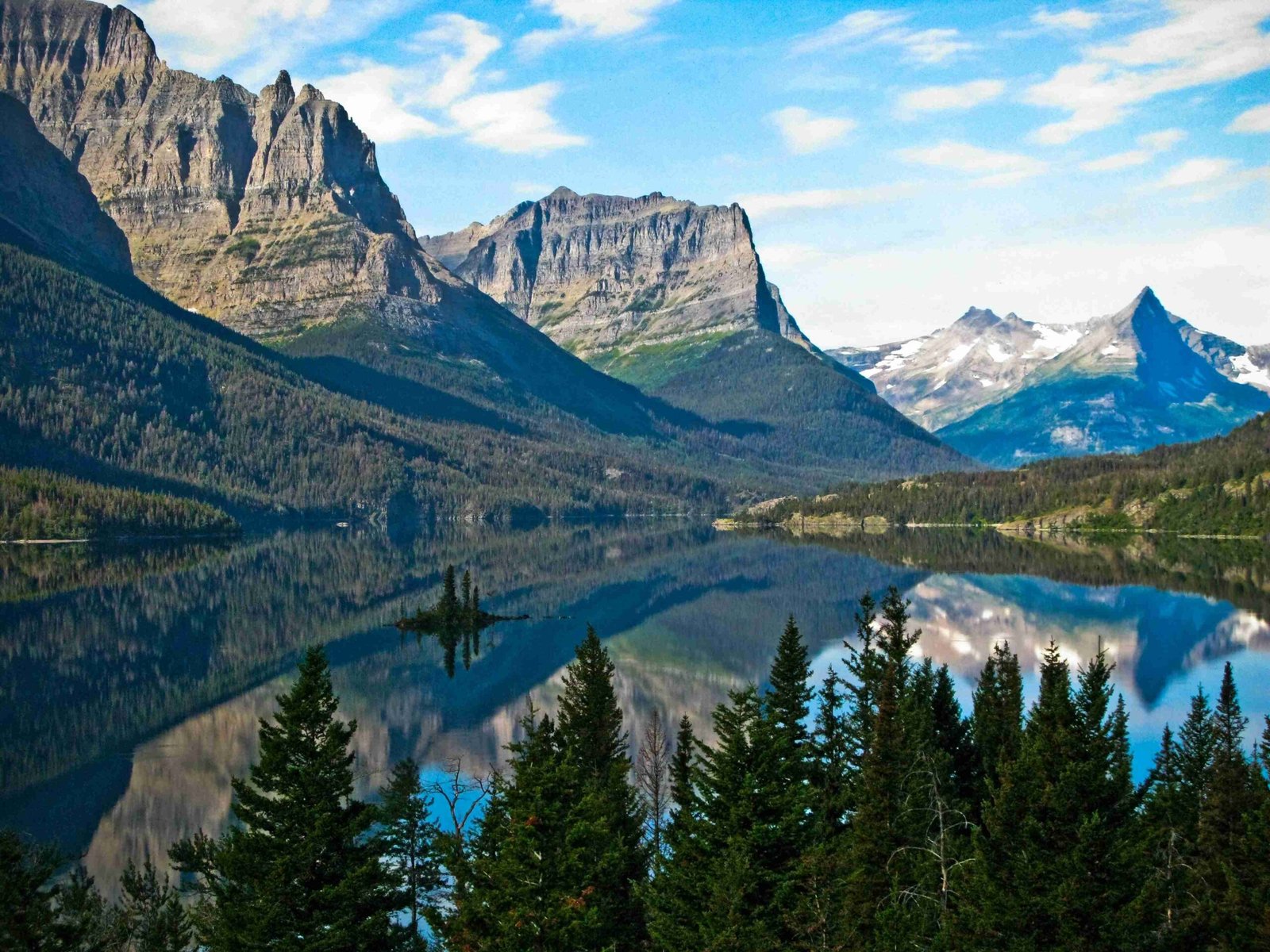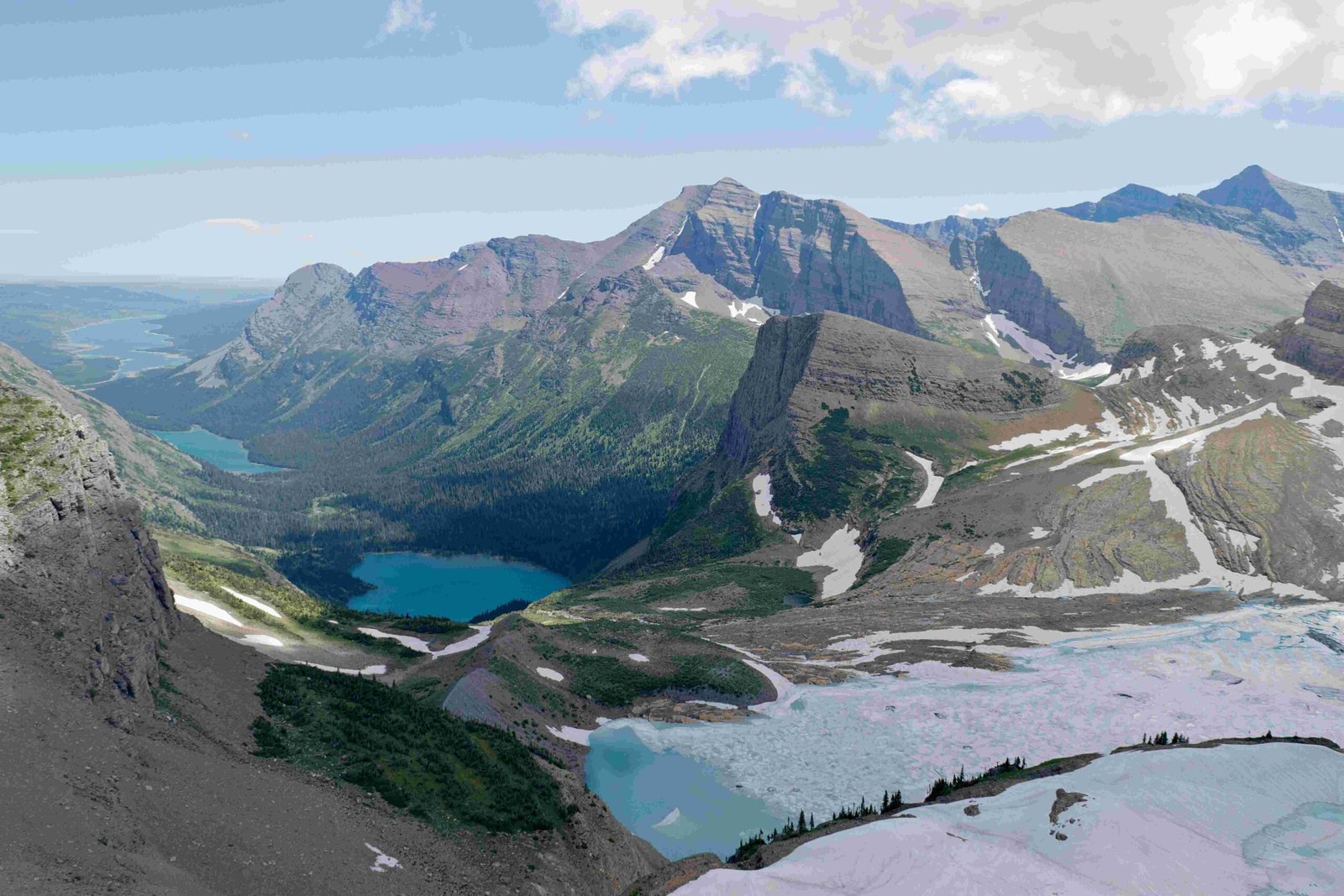The hike to Snow Moon Lake in Glacier National Park is a challenging off-trail adventure that offers breathtaking views of pristine alpine landscapes. Located in the Many Glacier area, this strenuous trek involves navigating rugged terrain, steep elevation gains, and dense vegetation. Hikers are rewarded with stunning vistas of the surrounding peaks, crystal-clear lakes, and the chance to experience the park’s remote wilderness. This hike is recommended for experienced backcountry explorers and requires careful planning and preparation.
What is the Starting Point for the Hike to Snow Moon Lake?

The journey to Snow Moon Lake typically begins in the Many Glacier area of Glacier National Park. The trailhead is usually located near the Many Glacier Hotel, which serves as a convenient starting point for this adventurous hike. Here are the key details about the trailhead:
- Location: Near Many Glacier Hotel
- Nearby Landmarks: Swiftcurrent Lake and Lake Josephine
- GPS Coordinates: Approximately 48.75803°N / 113.65761°W (for Allen Mountain, which includes Snow Moon Basin)
- Parking: Available near Many Glacier Hotel and Swiftcurrent Motor Inn
It’s important to note that access to the trailhead may be affected by road conditions. Always check the park’s official website for the latest updates on the Many Glacier Road before planning your trip.
How Difficult is the Hike to Snow Moon Lake?

The hike to Snow Moon Lake is considered a challenging endeavor, suitable for experienced hikers with strong navigation skills. Here’s a breakdown of the difficulty factors:
- Trail Condition: Mostly off-trail, requiring route-finding skills
- Elevation Gain: Approximately 3,000 feet to reach Snow Moon Basin
- Distance: Varies, but can range from 6 to 10 miles or more round trip
- Terrain: Rugged, with steep faces, dense vegetation, and scree slopes
- Duration: Full day or multi-day trip, depending on pace and exploration
| Difficulty Factor | Description |
|---|---|
| Physical Demand | High |
| Technical Skills | Advanced |
| Navigation | Challenging |
| Exposure | Significant |
Given the demanding nature of this hike, it’s crucial to be well-prepared with proper gear, supplies, and backcountry experience.
When is the Best Time to Hike to Snow Moon Lake?
The optimal time for hiking to Snow Moon Lake is during the summer and early fall months. This window provides the most favorable conditions for tackling the challenging terrain. Consider the following factors when planning your trip:
Best Months:
- July
- August
- Early September
Seasonal Considerations:
- Summer (July-August):
- Warmer temperatures
- Longer daylight hours
- Most trails clear of snow
-
Peak visitation period
-
Early Fall (September):
- Cooler temperatures
- Potential for early snow at higher elevations
- Fewer crowds
-
Beautiful fall colors
-
Late Spring/Early Summer (June):
- Possible lingering snow on trails
- Higher water levels in streams and rivers
- Wildflowers beginning to bloom
It’s essential to check weather forecasts and trail conditions before embarking on your hike, as mountain weather can be unpredictable even during the best months.
What Should I Pack for the Hike to Snow Moon Lake?
Given the remote and challenging nature of the hike to Snow Moon Lake, proper packing is crucial for safety and comfort. Here’s a comprehensive list of essential items to bring:
- Navigation Tools:
- Topographic map of the area
- Compass
-
GPS device (with extra batteries)
-
Safety Equipment:
- First aid kit
- Emergency shelter (e.g., lightweight tent or bivy sack)
- Whistle
-
Bear spray
-
Clothing:
- Moisture-wicking base layers
- Insulating mid-layer (fleece or wool)
- Waterproof and breathable outer layer
- Sturdy hiking boots
- Extra socks
-
Hat and gloves
-
Food and Water:
- High-energy snacks and meals
- Water filtration system or purification tablets
-
At least 3 liters of water carrying capacity
-
Other Essentials:
- Headlamp with extra batteries
- Multi-tool or knife
- Sun protection (sunscreen, sunglasses, lip balm)
- Insect repellent
- Trekking poles
Remember to pack everything in a sturdy, comfortable backpack and follow Leave No Trace principles throughout your journey.
What Wildlife Might I Encounter on the Hike?
Glacier National Park is home to a diverse array of wildlife, and the remote area around Snow Moon Lake offers excellent opportunities for wildlife viewing. However, it’s crucial to maintain a safe distance and practice proper wildlife etiquette. Here are some animals you might encounter:
- Large Mammals:
- Grizzly bears
- Black bears
- Mountain goats
- Bighorn sheep
- Moose
-
Elk
-
Smaller Mammals:
- Marmots
- Pikas
- Ground squirrels
-
Marten
-
Birds:
- Golden eagles
- Clark’s nutcrackers
- Gray jays
- Ptarmigans
Wildlife Safety Tips:
- Make noise while hiking to alert animals of your presence
- Carry bear spray and know how to use it
- Store food properly in bear-resistant containers
- Never approach or feed wildlife
- If you encounter a bear, stay calm and slowly back away
How Can I Prepare for the Off-Trail Sections of the Hike?
The hike to Snow Moon Lake involves significant off-trail navigation, which requires special preparation and skills. Here are some tips to help you prepare for the off-trail sections:
- Study the Route:
- Research the area thoroughly using topographic maps and satellite imagery
-
Familiarize yourself with key landmarks and terrain features
-
Improve Navigation Skills:
- Practice using a map and compass in various conditions
-
Learn to identify natural navigational aids (e.g., sun position, prominent peaks)
-
Physical Preparation:
- Train on varied and challenging terrain
- Build endurance for long days of hiking
-
Practice scrambling and navigating through dense vegetation
-
Mental Preparation:
- Develop problem-solving skills for route-finding challenges
-
Be prepared to turn back if conditions become unsafe
-
Gear Considerations:
- Wear sturdy boots with good ankle support
- Use gaiters to protect against brush and debris
- Bring trekking poles for balance and stability
Remember, off-trail hiking requires a higher level of responsibility and self-reliance. Always inform someone of your plans and expected return time before embarking on this challenging adventure.
What Are the Regulations for Hiking in Glacier National Park?
When hiking to Snow Moon Lake or any other area in Glacier National Park, it’s essential to adhere to park regulations to protect the environment and ensure visitor safety. Here are some key rules and guidelines:
- Permits and Registration:
- Obtain necessary backcountry permits for overnight stays
-
Register at ranger stations for day hikes in remote areas
-
Leave No Trace Principles:
- Pack out all trash and waste
- Use established campsites when available
-
Minimize campfire impacts
-
Wildlife Regulations:
- Store food and scented items in bear-resistant containers
- Maintain a distance of at least 100 yards from bears and wolves
-
Keep 25 yards away from other large animals
-
Trail and Off-Trail Etiquette:
- Stay on designated trails where they exist
- When off-trail, spread out to minimize impact
-
Yield to uphill hikers and horses
-
Camping Regulations:
- Camp only in designated areas
- Follow group size limits
-
Observe quiet hours
-
Water Use:
- Use biodegradable soap at least 200 feet from water sources
- Properly dispose of wastewater
Always check the park’s official website or speak with a ranger for the most up-to-date regulations before your hike.
What Are the Scenic Highlights of the Hike to Snow Moon Lake?
The challenging journey to Snow Moon Lake is rewarded with breathtaking scenery and unique natural features. Here are some of the scenic highlights you can expect along the way:
-
Alpine Meadows: Vibrant wildflower displays during peak summer months
-
Glacial Lakes:
- Snow Moon Lake: The hike’s ultimate destination, a pristine alpine lake
-
Falling Leaf Lake: A picturesque stop along the route
-
Mountain Vistas:
- Panoramic views of surrounding peaks in the Many Glacier area
-
Glimpses of distant glaciers clinging to mountainsides
-
Wildlife Habitats: Opportunities to observe animals in their natural environment
-
Geological Features:
- Rugged rock formations
-
Evidence of glacial activity in the landscape
-
Forest Transitions: Changing vegetation as you gain elevation, from dense forests to alpine zones
-
Waterfalls and Streams: Cascading water features fed by snowmelt and glaciers
Remember to bring a camera to capture these stunning views, but always prioritize safety and environmental preservation over getting the perfect shot.
By following this comprehensive guide, you’ll be well-prepared for the challenging but rewarding hike to Snow Moon Lake in Glacier National Park. Remember to respect the wilderness, stay safe, and enjoy the incredible natural beauty of this remote alpine destination.
Reference:
1. Backcountry Post – Glacier Nat’l Park – August – \”off trail\” adventures
2. SummitPost – Allen Mountain : Climbing, Hiking & Mountaineering
3. Gaia GPS – Best Hiking Trails near Snow Moon Lake – Montana